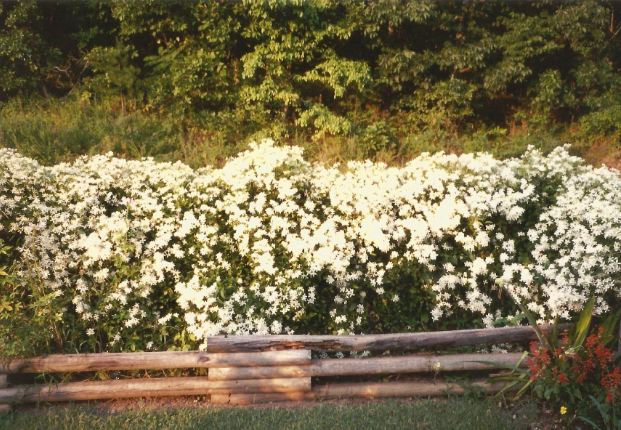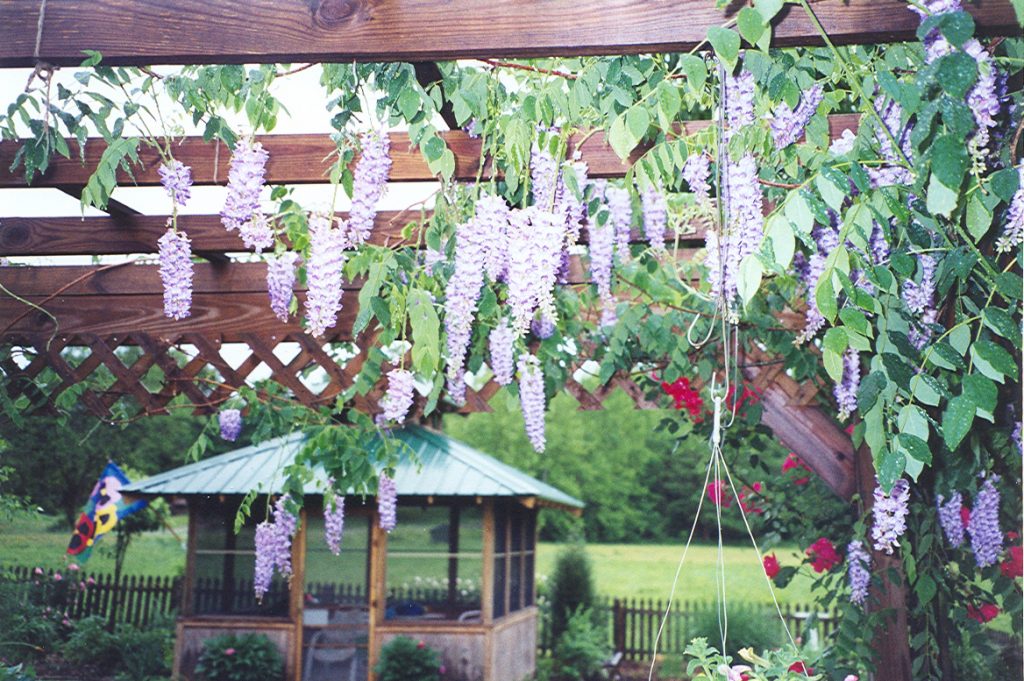Nothing looks better on a fence, or a pergola, than a full blossoming vine. In this case I’m speaking of perennial vines, not the annuals like morning glory or moon flowers. Here in west Kentucky I have used a number of vigorous perennial vines that grow quite profusely in our climate. I began with a freebie–the wild wisteria.

Wisteria often gets a bad rap because it can be invasive. It’s true that one must keep wisteria “tamed” with pruning, otherwise it can get away from you. But the reward is a lovely cascade of pendulous violet blossoms each spring, which often arrive just as the butterflies and hummingbirds do. The sweet scent of wisteria is particularly delightful when planted overhead, say on a pergola or archway. I have also grown Japanese versions of wisteria in white as well as a deep purple.

When a fuller effect is needed, say on a large pergola, a mix of wisteria and hummingbird vine (trumpet vine) work well together. Both can be found for free just about anywhere in the country, and the hummingbird vine begins to bloom right after the wisteria finishes up. Again, pruning will be needed, and be sure to keep plantings away from electrical wires and poles. Not only is a pleasing shape attained from pruning, but the wisteria will actually have more and fuller blossoms when branches are pruned back.
Wisteria hanging from my pergolaAnother vine that can be quite lovely, and which blooms throughout the summer, is the Japanese variety of red honeysuckle. Very much like the wild varieties, these vines grow thickly and blossom profusely. They grow in almost any soil, prefer sunshine, and are practically maintenance free. Just prune them back if you feel they are getting larger than you want. Hummingbirds love them.
Another favorite climbing vine is the “Montana Rubens” variety of clematis. It grows quite thickly and the tiny white blooms arrive by the thousands long after other clematis have stopped blooming. It hits its peak in August and September in our area. The flowers have a nice scent, but the plant does have a tendency to attract Japanese beetles.

And last, but certainly not least, is perhaps my favorite blooming vine—clematis. Perhaps it’s because they grow so well in our alkaline soil, but clematis in shades of purple through pure white adorn fences, posts, and mailboxes throughout our area. My own secret with clematis is to mix limestone gravel in with the soil they are planted in. They love it.
What are your favorite “clinging vines”?
© Wade Kingston

